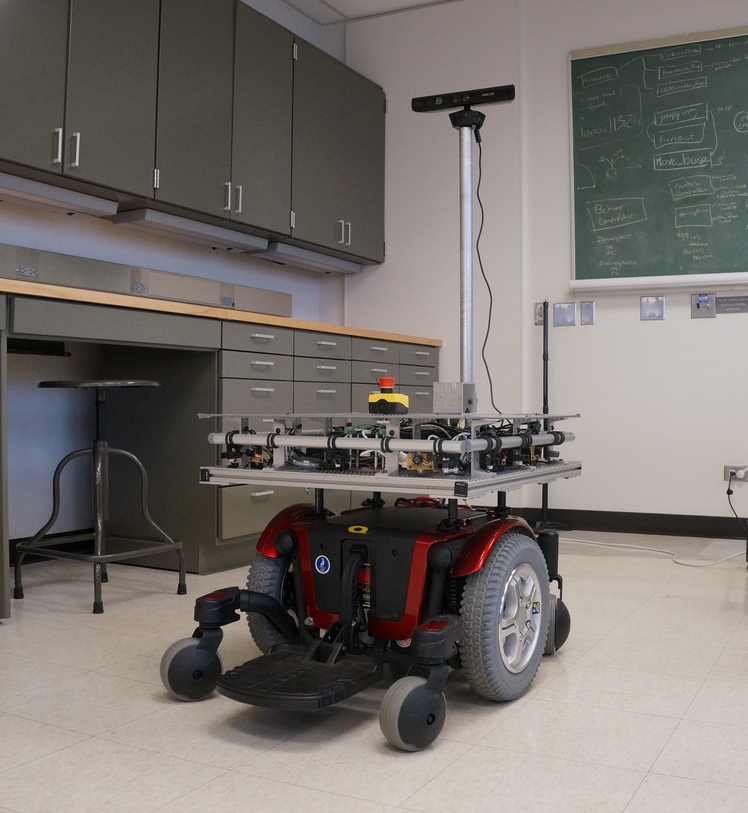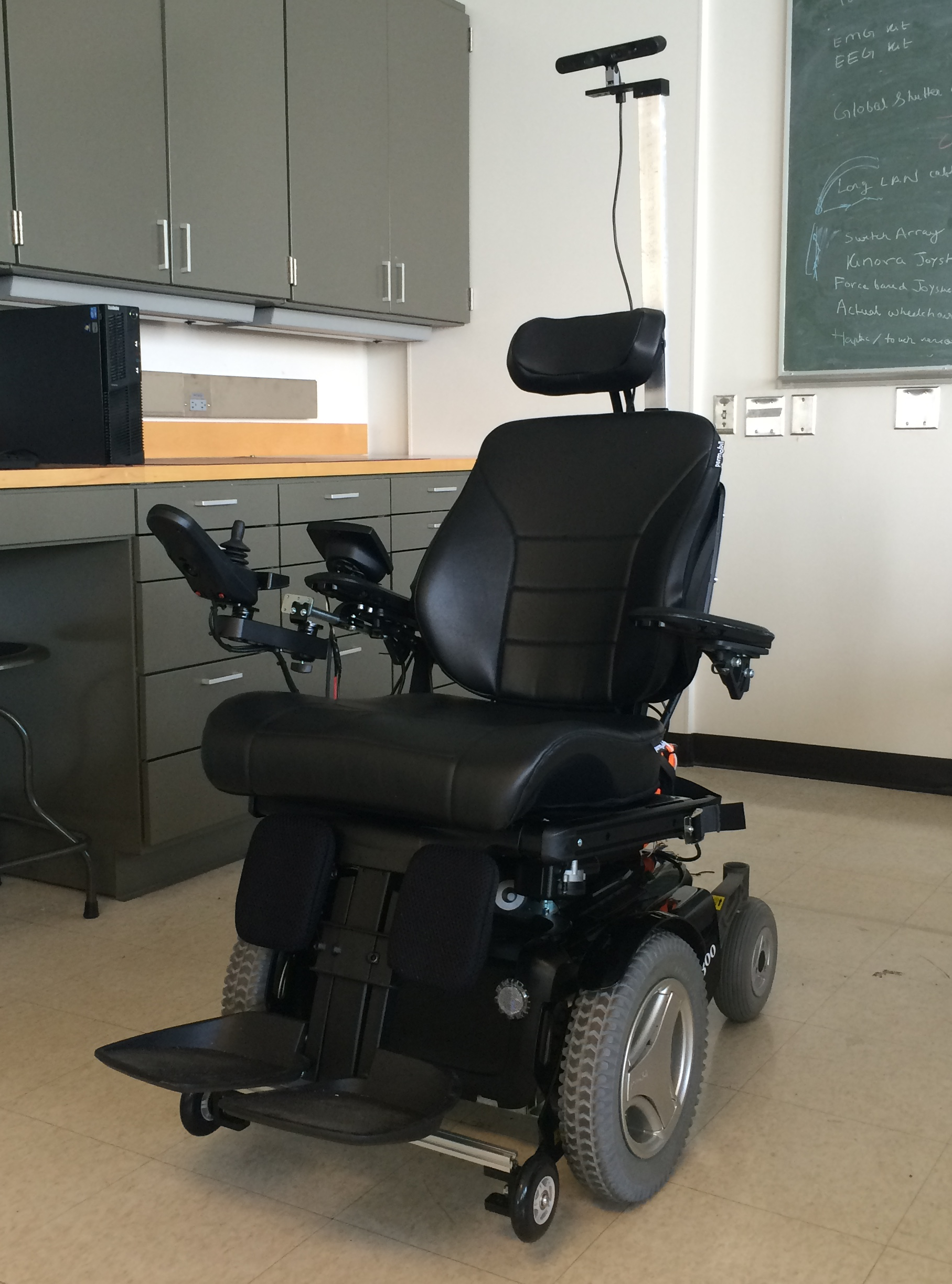We envision a future where partial-autonomy in powered wheelchairs will be the standard: that when a person is being fit for a wheelchair by a therapist, a variety of autonomy options will be available, just like today a variety of seating options are available.

Robotics autonomy can help with obstacle avoidance, navigation, route planning and spatially-constrained maneuvers. We are developing a shared-autonomy wheelchair that consists of modular software and hardware components, where the machine automation furthermore is customized to the physical needs and personal preferences of the user [6,11]. Our system also prioritizes simple integration with existing commercial chairs and control interfaces—to mitigate costs not covered by insurance and thus accelerate adoption by users.
For this platform, we have developed perception algorithms able to detect doorways [3], inclines and drop-offs [17] and docking locations [7]. We have conducted a study with high-level spinal cord injured volunteers that evaluates user preference and performance over multiple control-sharing paradigms and control interfaces [28], and developed algoirthms to predict this preference from computable metrics [25].

A collaboration with Innovative Design Labs aims to transition the control-sharing components of our system in particular to a commercial product. Funding Source: National Institutes of Health (NIH/SBIR R43-HD085317)
Doorway Detection with Pose Estimation [2]
Docking Location Identification with Pose Information [7]
Control Sharing for Safety with a Smart Wheelchair [6]
Autonomous Doorway Traversal with Obstacles
Autonomous Docking in Constrained Spaces

